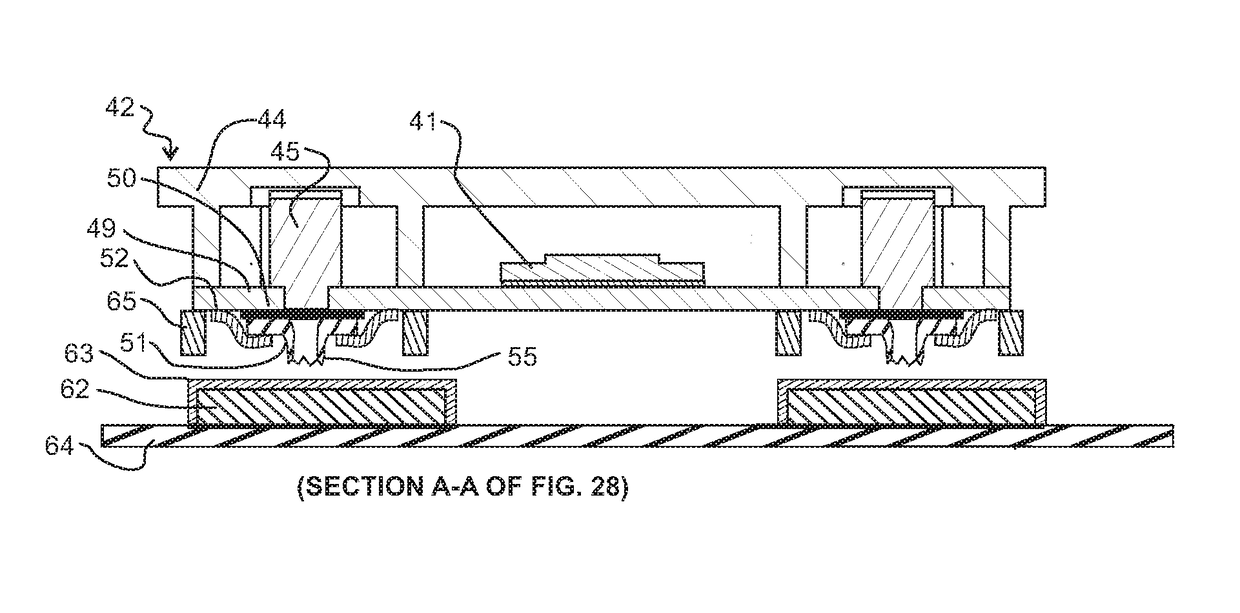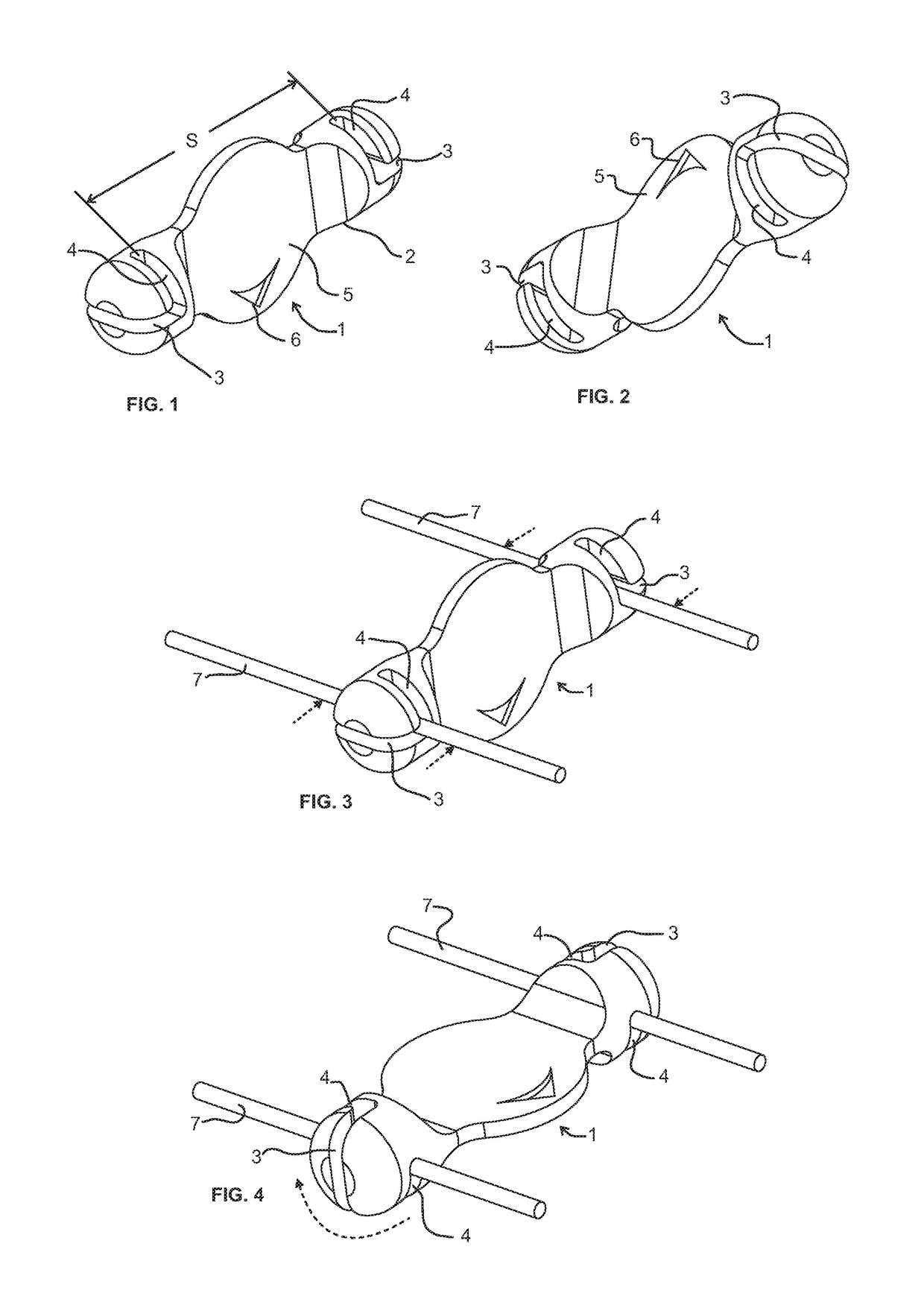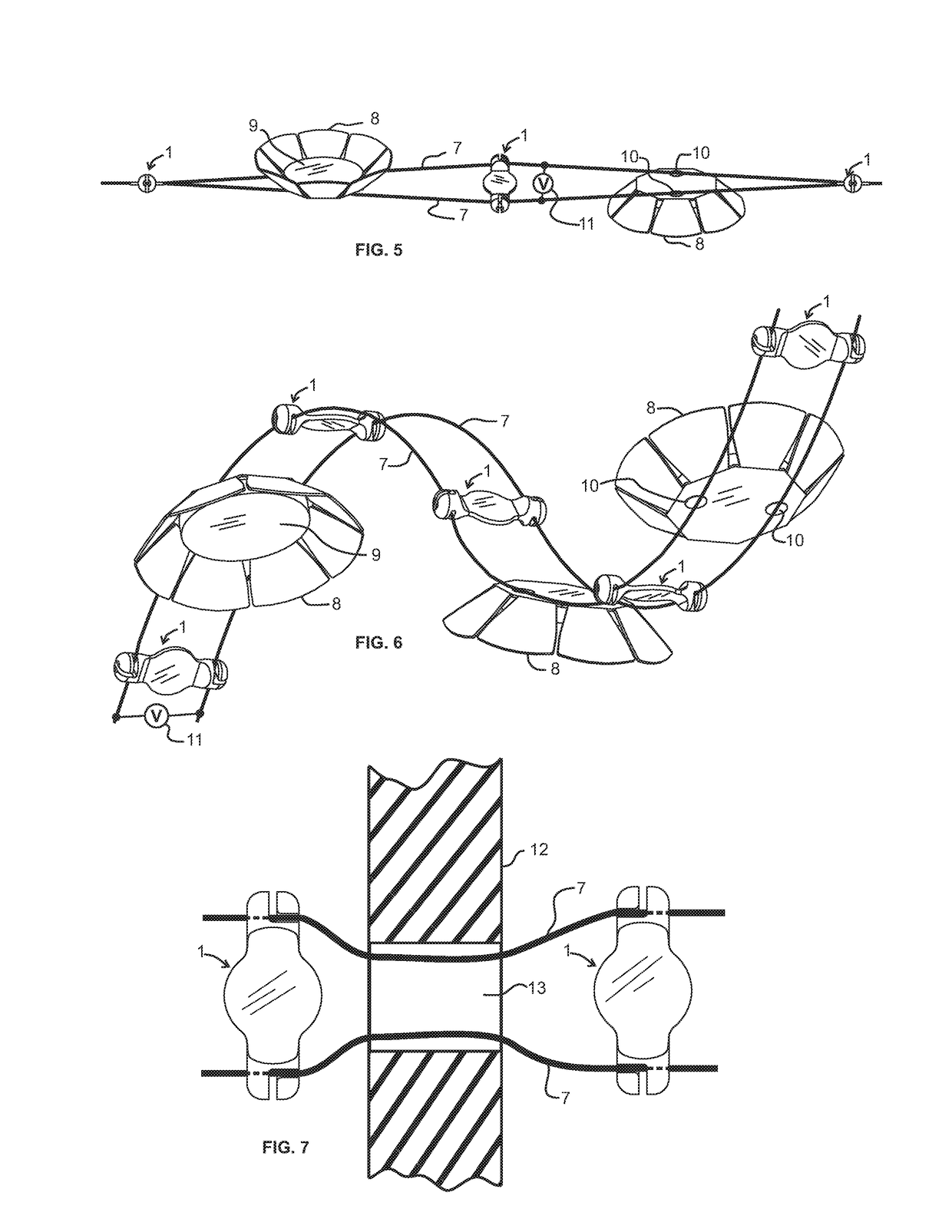Suspended track and planar electrode systems and methods
a planar electrode and track technology, applied in the direction of semiconductor devices for light sources, lighting and heating apparatus, lighting support devices, etc., can solve the problems of difficult installation of systems, requiring turnbuckles and other relatively expensive elements and tools, positioning and routing of electrodes through space or along a surface in anything but a straight path can be difficult, and special elements are required to change electrode direction
- Summary
- Abstract
- Description
- Claims
- Application Information
AI Technical Summary
Benefits of technology
Problems solved by technology
Method used
Image
Examples
Embodiment Construction
[0108]Referring to FIG. 1 through FIG. 4 illustrating a first embodiment, the electrode track system is comprised of a twist-lock electrode spacer 1 and two electrode rails 7. The twist-lock electrode spacer 1 is comprised of an electrically insulating body 2 (or a body coated with an insulating layer) and may be made from materials such as injection-molded engineering thermoplastics (polycarbonate, ABS, polystyrene, etc.). Spacer 1 contains radial wire insertion slots 3 on each end of spacer 1, and circumferential arc electrode locking slots 4 that intersect with insertion slots 3. Electrode locking slots 4 in this embodiment are configured to extend approximately 90 degrees around the axis of the spacer. As an example, spacer 1 may be configured with circumferential locking slots 4 located approximately 1.5 inches apart (distance CS' in FIG. 1), and the width of the slots approximately 0.08″ wide to accommodate a 0.08″ diameter electrode material, with a general outside diameter o...
PUM
 Login to View More
Login to View More Abstract
Description
Claims
Application Information
 Login to View More
Login to View More - R&D
- Intellectual Property
- Life Sciences
- Materials
- Tech Scout
- Unparalleled Data Quality
- Higher Quality Content
- 60% Fewer Hallucinations
Browse by: Latest US Patents, China's latest patents, Technical Efficacy Thesaurus, Application Domain, Technology Topic, Popular Technical Reports.
© 2025 PatSnap. All rights reserved.Legal|Privacy policy|Modern Slavery Act Transparency Statement|Sitemap|About US| Contact US: help@patsnap.com



